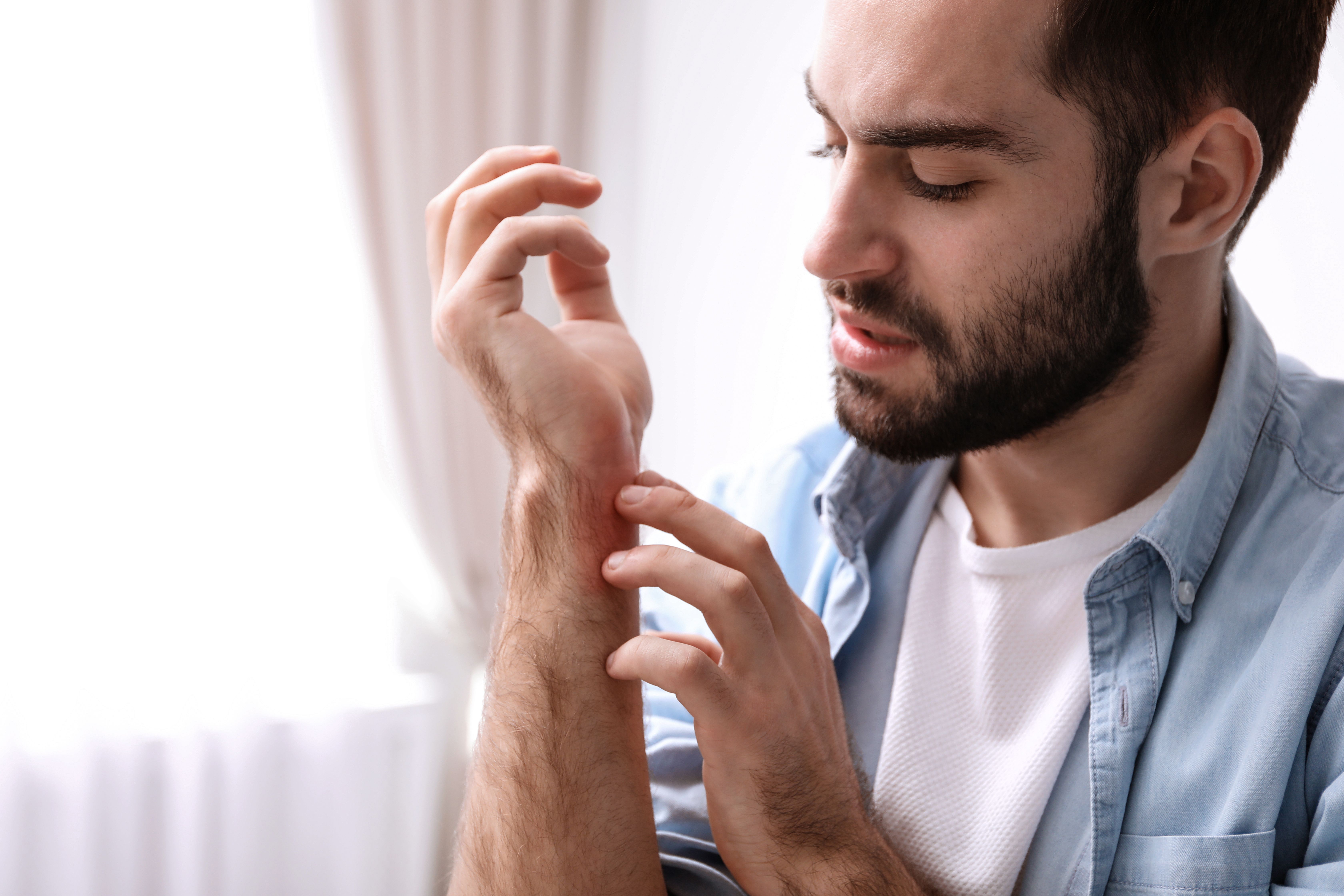- Acne
- Actinic Keratosis
- Aesthetics
- Alopecia
- Atopic Dermatitis
- Buy-and-Bill
- COVID-19
- Case-Based Roundtable
- Chronic Hand Eczema
- Chronic Spontaneous Urticaria
- Drug Watch
- Eczema
- General Dermatology
- Hidradenitis Suppurativa
- Melasma
- NP and PA
- Pediatric Dermatology
- Pigmentary Disorders
- Practice Management
- Precision Medicine and Biologics
- Prurigo Nodularis
- Psoriasis
- Psoriatic Arthritis
- Rare Disease
- Rosacea
- Skin Cancer
- Vitiligo
- Wound Care
Article
Dupilumab Safe and Effective in Moderate-to-Severe Atopic Dermatitis
Author(s):
In a clinical study conducted in Japan, researchers found the treatment well-tolerated and efficacious in moderate-to-severe cases.
Dupilumab is safe and effective in treating patients with moderate-to-severe atopic dermatitis (AD), according to a recent study.1
New Africa/AdobeStock

A team of researchers in Japan conducted the observational study across 122 clinical practices countrywide with the goal of determining the treatment’s efficacy in patients ages 15 and older. In Japan, researchers have already conducted post-marketing surveillance of the drug’s safety and efficacy, where AD is the second most common dermatologic condition.1
In order to qualify for dupilumab treatment in Japan, patients must demonstrate suboptimal responses to other standard AD treatment options, such as topical medications and creams.
Additionally, patients pursuing dupilumab treatment must meet baseline criteria of: an Eczema Area and Severity Index (EASI) score of greater than or equal to 16 or an EASI subscore of greater than or equal to 2.4; an Investigator’s Global Assessment (IGA) score of greater than or equal to 3; and a body surface area (BSA) of greater than or equal to 10% affected.
Participants (n=600) were at least 15 years of age, had already met the country’s existing prerequisites for treatment, had no prior history of dupilumab use, and were not currently participating in other interventional clinical trials.
Upon participants beginning use of dupilumab, researchers followed and assessed their progress for 2 years. At the start of the 2-year period, they collected relevant demographic information, medication history, and clinical history. Throughout the study, researchers collected safety and effectiveness data via electronic case report forms.
At the conclusion of the 2 years, researchers conducted a safety analysis and an effectiveness analysis.
Of the participants involved in the safety analysis (n=599; 1 participant did not make the registration deadline), 98 participants experienced adverse drug reactions (ADRs). Common reactions included conjunctivitis, blepharitis, and headaches. Of these participants, 3 had serious ADRs. Additionally, several participants (n=5) had serious reactions, including comorbid asthma, hypersensitivity, and infections. In total, 64 patients discontinued treatment.
In the majority of participants, researchers noted remarkable improvement at month 4 of treatment. The average EASI score decreased from 30.7 at baseline to 7.2 at the study’s conclusion, and 63.9% of participants reached EASI-75 after 4 months.
Potential limitations include potential underreporting of safety and effectiveness based on the use of routine clinical practice data. Additionally, study authors note that the number of patients evaluated at the study’s conclusion varied from the sample size calculation.
“In conclusion, the results to date of this interim PMS [post-marketing surveillance] support the use of dupilumab as a safe and effective option for the treatment of adults and older adolescents with moderate-to-severe AD in routine clinical practice in Japan,” study authors wrote. “The tolerability of dupilumab has thus far been comparable with the reported safety profile, with a low incidence of serious ADRs and without any new safety signals.”
Reference
- Saeki H, Fujita H, Suzuki K, Arima K. Safety and effectiveness of dupilumab in the real‐world treatment of atopic dermatitis in Japan: 1‐year interim analysis from a post‐marketing surveillance. Journ of Cutaneous Immunology and Allergy. 2023. doi:10.1002/cia2.12303
Newsletter
Like what you’re reading? Subscribe to Dermatology Times for weekly updates on therapies, innovations, and real-world practice tips.











